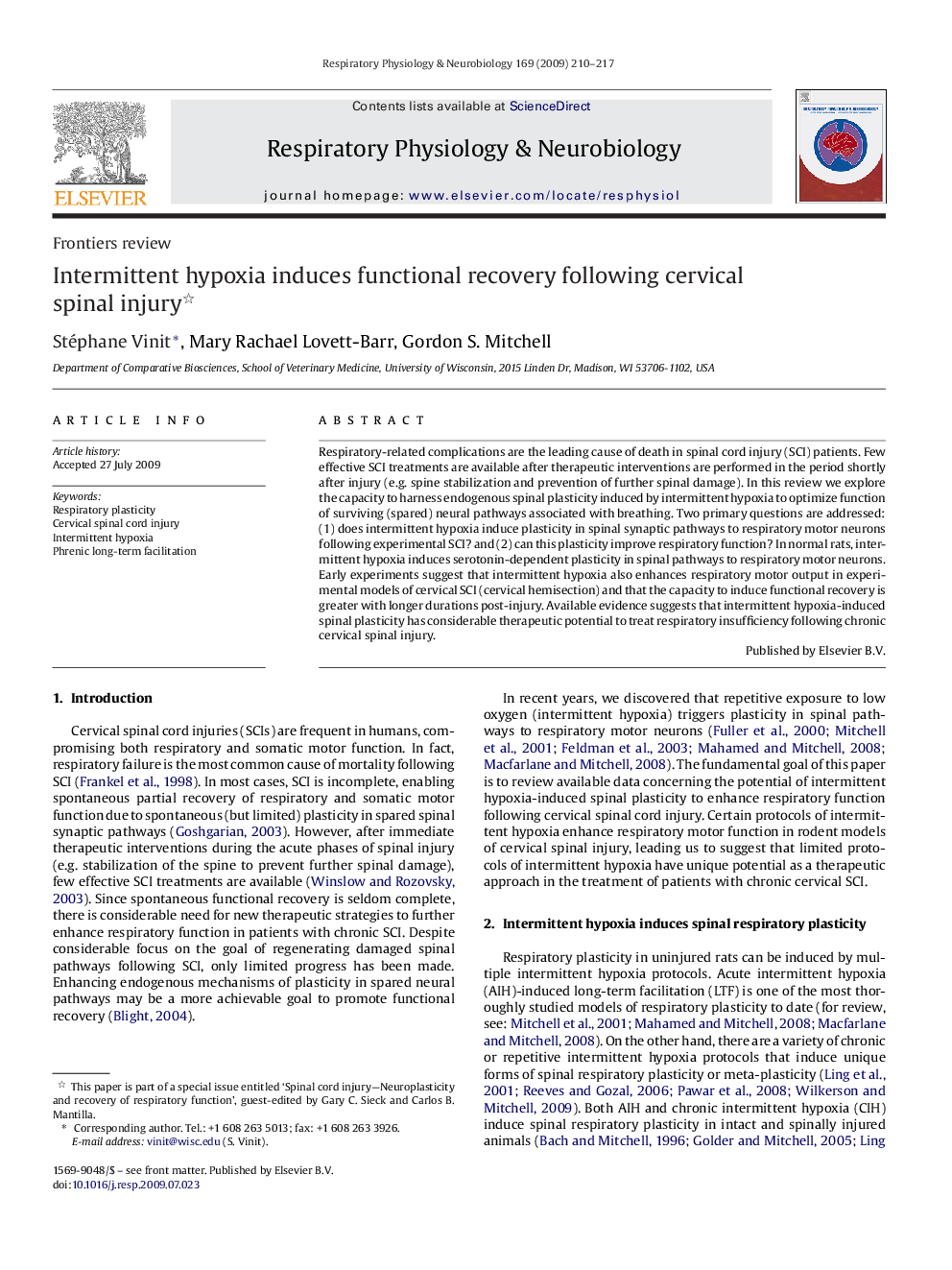| Article ID | Journal | Published Year | Pages | File Type |
|---|---|---|---|---|
| 2847734 | Respiratory Physiology & Neurobiology | 2009 | 8 Pages |
Respiratory-related complications are the leading cause of death in spinal cord injury (SCI) patients. Few effective SCI treatments are available after therapeutic interventions are performed in the period shortly after injury (e.g. spine stabilization and prevention of further spinal damage). In this review we explore the capacity to harness endogenous spinal plasticity induced by intermittent hypoxia to optimize function of surviving (spared) neural pathways associated with breathing. Two primary questions are addressed: (1) does intermittent hypoxia induce plasticity in spinal synaptic pathways to respiratory motor neurons following experimental SCI? and (2) can this plasticity improve respiratory function? In normal rats, intermittent hypoxia induces serotonin-dependent plasticity in spinal pathways to respiratory motor neurons. Early experiments suggest that intermittent hypoxia also enhances respiratory motor output in experimental models of cervical SCI (cervical hemisection) and that the capacity to induce functional recovery is greater with longer durations post-injury. Available evidence suggests that intermittent hypoxia-induced spinal plasticity has considerable therapeutic potential to treat respiratory insufficiency following chronic cervical spinal injury.
